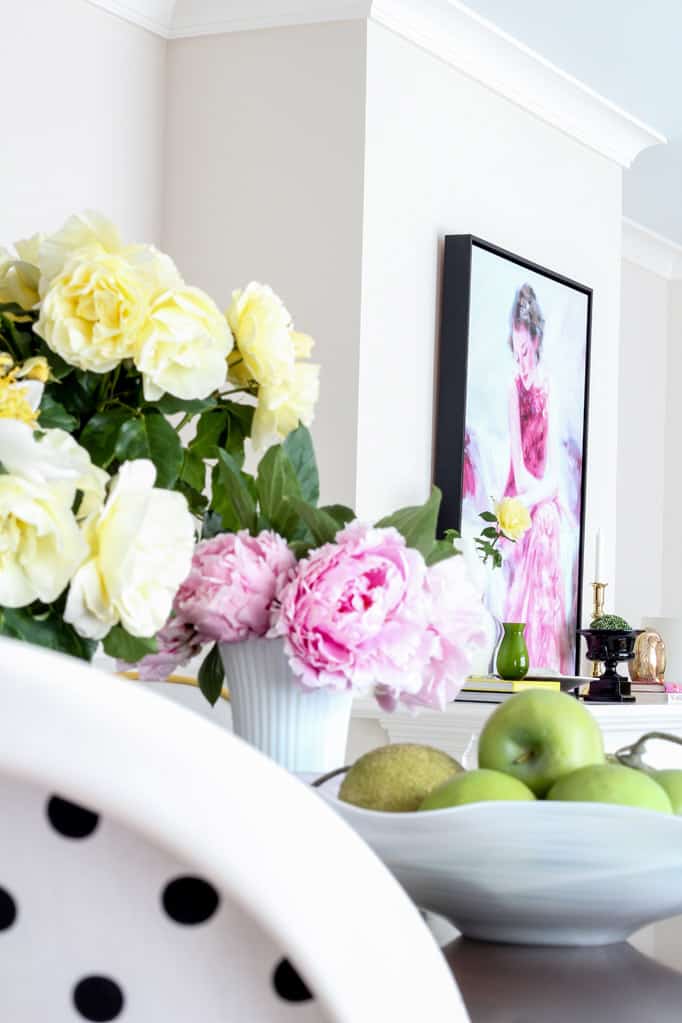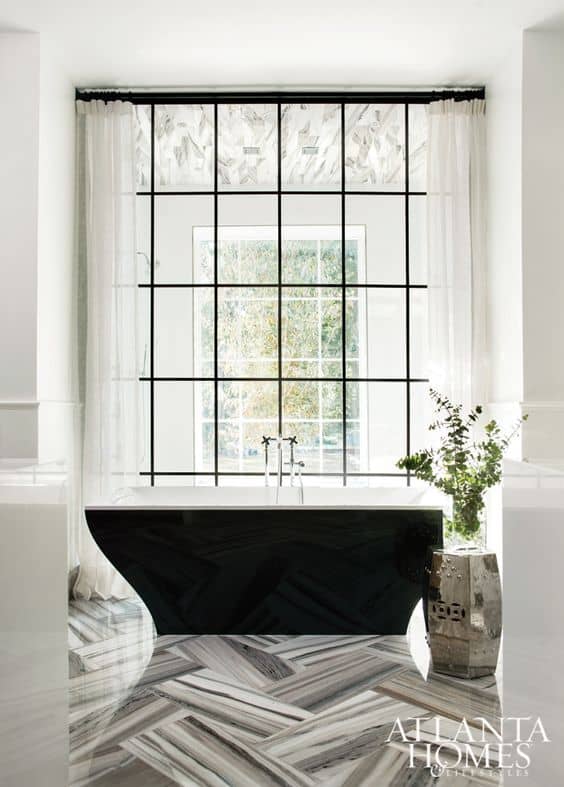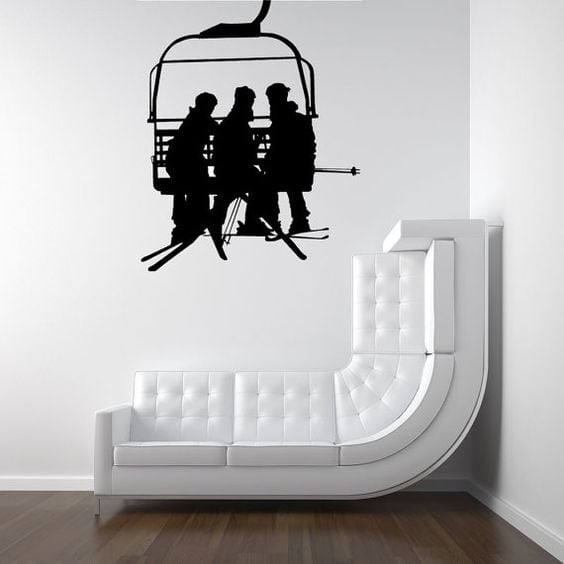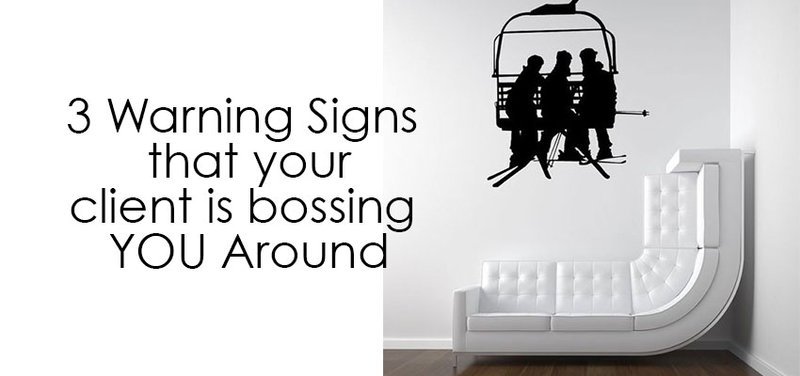
Interior Design by Maria Killam
This post has been percolating in my head for a long time. I have touched on this conversation in other posts but have finally been able to explain this dynamic better than ever, based on the insight I’ve gained watching all the Facebook conversations that happen on my private page for True Colour Expert graduates.
One of the biggest perks of my three day Colour workshop is that you’re never alone again. You become part of an incredible online community of designers and decorators who are informed and passionate about colour.
If there’s an exterior you’re about to consult on and you have no idea what to do; you can post it on the page. If you are trying to source something you can’t find, or you need to get some clarity on a project you’re working on; help is just a click away.

This post is for all design professionals who may not have formal training and the luxury of having apprenticed with another designer before they started their own business.
If you’ve worked for someone else before you start your own design firm, you have already learned a lot from their mistakes and successes. If not, then you have to figure it out yourself.
This post will also give the homeowner who has never worked with a design professional, some insight as to how you can contribute to help your decorator create a successful outcome.
I have met some homeowners who say they have never had a good experience working with a designer and it makes me sad when I hear that because it shouldn’t be the case. Read on to see if maybe you find yourself in this post and if so, it may help you understand why previous relationships with designers didn’t work out like you’d hoped or at the very least how you can have a more successful outcome in the future.
There’s a fine line in the world of being creative that every designer or decorator needs to figure out. And here is what it is: when do you hold your position and convince your client that your idea is the one they should approve, or when do you throw out your idea because your client doesn’t seem to be buying it?
The creative intangible world of decorating, choosing fabrics, finishes, colours, and styling means that you can’t just give your client exactly what they want because if they could have achieved what they are asking you to do then they wouldn’t have hired you in the first place.
We all want to make our clients happy, but that does not mean caving to their every whim and demand. It often means being firm on what won’t work and more importantly explaining why.
And here’s another point: how you know you should be a decorator or designer is when your family and friends are already asking you for design and styling help.
But professional decorating for other people is hard in the beginning.
You could be extremely gifted at decorating your own house but not be so good at helping other people decorate theirs.
Especially because most of the time (when you’re new) you are usually working with SOMETHING that exists in their house that you might not love or worse, think is just wrong for the space.
As a professional, a big part of a decorators job (especially when your client is not starting from scratch and just wants to refresh their house) is trying to determine what should stay and what absolutely needs to go in order to achieve the new look your client is craving.
Then there is the whole charging fees thing. There are all kinds of threads with questions about money, and how to charge on my private True Colour Expert page. And then many other threads filled with questions like this:
My client chose or is keeping {this awful floor/sofa/area rug} now what do I do?
So here are the three warning signs that your client is bossing you around:
You don’t have a strong aesthetic yet which means your portfolio does not reflect that.
Your client has not hired you because they liked YOUR particular look and feel because you haven’t quite developed one yet.
This makes everything much harder to manage.
It’s the difference between simply hiring “help” and actually buying into your particular aesthetic. It’s much easier to sell your aesthetic if 1. you have a defined look and promote it 2. your client hired you for your look.
If, at your very first meeting, your client doesn’t like anything you’re presenting, the reason could be that you haven’t established your expertise or enough of an aesthetic common ground to have your client trust your judgement.
In the beginning of my design career, when it was time to present my ideas, I would show up with almost all my fabric books, hoping that something would stick because back then my motto was “I can work with any design style”. Needless to say, sometimes I would just have to go back to the drawing board because now I’d have gathered more information based on what they didn’t like.
Advice for the homeowner: If you are working with a new decorator, give them as much information as you can about what you like and if you’re not sure or like so many things that it’s hard for you to be specific, then create a Pinterest board filled with rooms you DON’T LIKE. That is also very helpful in helping to determine your aesthetic and what to steer away from.
I had an eDesign client who hired me to help her choose a colour for her brand new kitchen. She was upset because she didn’t like her kitchen at all, but she was especially cranky that the undertones seemed to clash (they did). However, she also confessed that she was a really busy person who worked full time and and simply did not take the time at the beginning of the project to determine what kind of kitchen she would love. So she gave her kitchen designer carte blanche and didn’t really have an opinion until the kitchen was being installed. Now that she saw the kitchen, she was suddenly very clear that she didn’t like it. And of course it was way too late to do anything about it.
I think back to the first time I hired a graphic designer many years ago and how I disliked everything he sent me. It took some research, but finally I found something similar to what I wanted that he could recreate. By giving him an example of what I liked, I was able to start approving his designs.
As a decorator (or anyone in a similar creative field), there’s not much you can do about this in the beginning but I think it’s enlightening to know that this probably explains the dynamic between you and your client.
And here’s the honest truth about this:
If you are a new decorator or designer, you might know that the area rug or other such offending item that they insist on keeping is going to hold the entire room hostage or just kill your vision for what it could be, but you’re only going with your intuition at this point, and without strong conviction, it’s hard to be persuasive.
Which takes us to warning sign number two:
You don’t have a strong enough opinion about what needs to happen in their house.

This comes from years of experience or very good insight and without that, it’s hard to give your client clear direction, so instead you cave and resign yourself to coming up with creative ways of working with their ‘so-not-right’ carpet and then privately complain about it to your decorator friends.
I recently arrived at a consultation where the client had inherited furniture from her mother. This was a young couple who had just bought their first apartment. They didn’t have the budget to buy all new furniture so they were struggling to work with what they had.
Immediately, I moved the furniture around, eliminated two chairs and went on-line and found two replacements.
And the conversation went something like this:
Me: Your two chairs have to go, they do not work at all, right now it looks like you’ve just moved in and haven’t bought new furniture yet.
Client: But it killed us to even get them in here, there’s no way to get them back out again. They are so big that they gouged the walls all the way up our very narrow staircase leading into the living room.
Me: Well, can you lower them down from the balcony? They CANNOT stay here.
Client: Okay, I’ll tell my husband, he’ll be happy to have a plan.
A few days later she sent me photos of the new chairs in her living room and thanked me for how much better the room felt.
The example I just gave you might sound a little simplistic and obvious, but if you’re in the industry, there are countless similar examples you could insert in the above conversation.
Advice for the homeowner: This one is hard because we’re talking about the intangible. The reason you’ve hired a professional is because design is not your area of expertise and often it’s also hard for you to visualize the end result so there’s a level of trust that has to happen between you and your decorator.
It’s hard to assess at the beginning of a project if 2 +2 will equal 4, or another way of saying it is, “Will your decorator make the correct judgement call on whether your two chairs are really best served thrown directly off the balcony.” Here’s my best advice; if what you’re hearing doesn’t resonate with you and doesn’t feel right for your house, pay your decorator, thank them for their work and hire someone else. Better to do that than build a new plan around furniture that still doesn’t work and doesn’t give you the look and feel that you want.
Years ago, a designer let me shadow her on a kitchen renovation project. The client had an 90s white kitchen with shiny slab doors with rounded tops and bottoms and black granite countertops also with rounded edges. Her existing floors were 12″ x 12″ pale grey tiles and with coordinating smaller grey tiles on the backsplash. She declared that her kitchen was classic enough that it didn’t need a renovation and because we were in the brown trend she went ahead and insisted on replacing her backsplash with the newest brown pearlized mosaics that were all the rage, and her 90s tile floor with brand new espresso brown flooring.
At the end of the project, after installing the newest, trendiest tile and floor in a 90s kitchen, it looked like “Old kitchen, new backsplash, new floor”. She later confided to me that she planned to replace the entire kitchen the following year.
And why did this seasoned designer let her client do this? Because her trades were super busy and it was easier for her to just manage replacing the floors and the backsplash so in this case, she went along with what her bossy client said she wanted. See how this can backfire?
Here’s another way a client will boss you around, and it might be the worst one:
Their expectations are unrealistic

Your client’s list of parameters or requirements for that perfect sofa or insert hard-to-source item here, is so narrow you can’t possibly find it unless you have it custom made by a swiss furniture maker only reachable by ski lift. Oh, and by the way, did I mention the budget for this sofa is less than $1000?

If you are a new decorator, you’re likely working with someone who also has never hired a decorator before. You might be a referral from your Mom or a good friend.
So there are two issues here. They could be on a budget which makes charging a challenge, or they simply have unrealistic expectations of what it looks like to work with a professional decorator, which could leave you with a long list of impossible-to-find items, and that takes more time and then gets hard to invoice.
When you’re new, you don’t know how much time it will take to source most items, and you won’t know that until you get to the end of your search. After several hours or even days you could find that what your client is looking for either doesn’t exist or is certainly not in their price range.
The way to handle this is to understand that you’re learning. You can’t charge for every hour at this stage because you do not have enough training or experience to understand how long it will take.
I have seen many bitter threads on design forums where a client hasn’t paid or balked at the final invoice and if you’ve ever had this experience, this might give you some insight as to why.
Even if your invoice clearly states that you’ve spent ‘X’ additional hours on the project that you’re not billing, your client won’t be happy to pay your invoice if any part of it is a surprise.
And perhaps your client didn’t know how much the invoice would be because you didn’t know how long any of it would take so then you prepare the bill, cross your fingers and hope to get paid.
This is why it is hard to set a standard for rates because obviously the longer you’ve been in the industry, the faster you get at all areas of managing the project and the better you are at original contracting which means your client knows what to expect all along the way.
When you ask me if I can make all your furniture work in your living room, I have already assessed with one glance that two of your chairs won’t work and within minutes, can find you the correct chairs. Something that would have taken me hours to determine in the beginning.
Advice for the homeowner: Money is never easy to talk about. It’s even harder once you feel like you and your decorator are friends which usually happens very quickly. If your designer isn’t forthcoming about rates and the process ask as many questions as you can. This conversation is much easier before a lot of time has been invested and before you feel like you have become friends. Both of you should be very clear about payment terms from the beginning.
These are some of the most common challenges that I’ve seen new decorators struggle with, but the good news is with experience and the support of other designers, they can all be overcome. Clarity, confidence and convictions sells, and developing your confidence comes with honing an aesthetic point of view.
Presenting your aesthetic on a blog or even Instagram is a great way to attract clients that appreciate your style which makes the initial negotiations much smoother since they already have an idea what they signed up for and trust your judgement.
Your job is not to be an obedient little decorating elf but to develop the knowledge base and experience to effectively manage communication, expectations and outcomes, so your client gets value for their money and ultimately the result they want which is what we all want, a home that fills us with happiness when we walk in the door.
See our eDesign packages here if you need help with your interior or exterior.
____________________________________________

